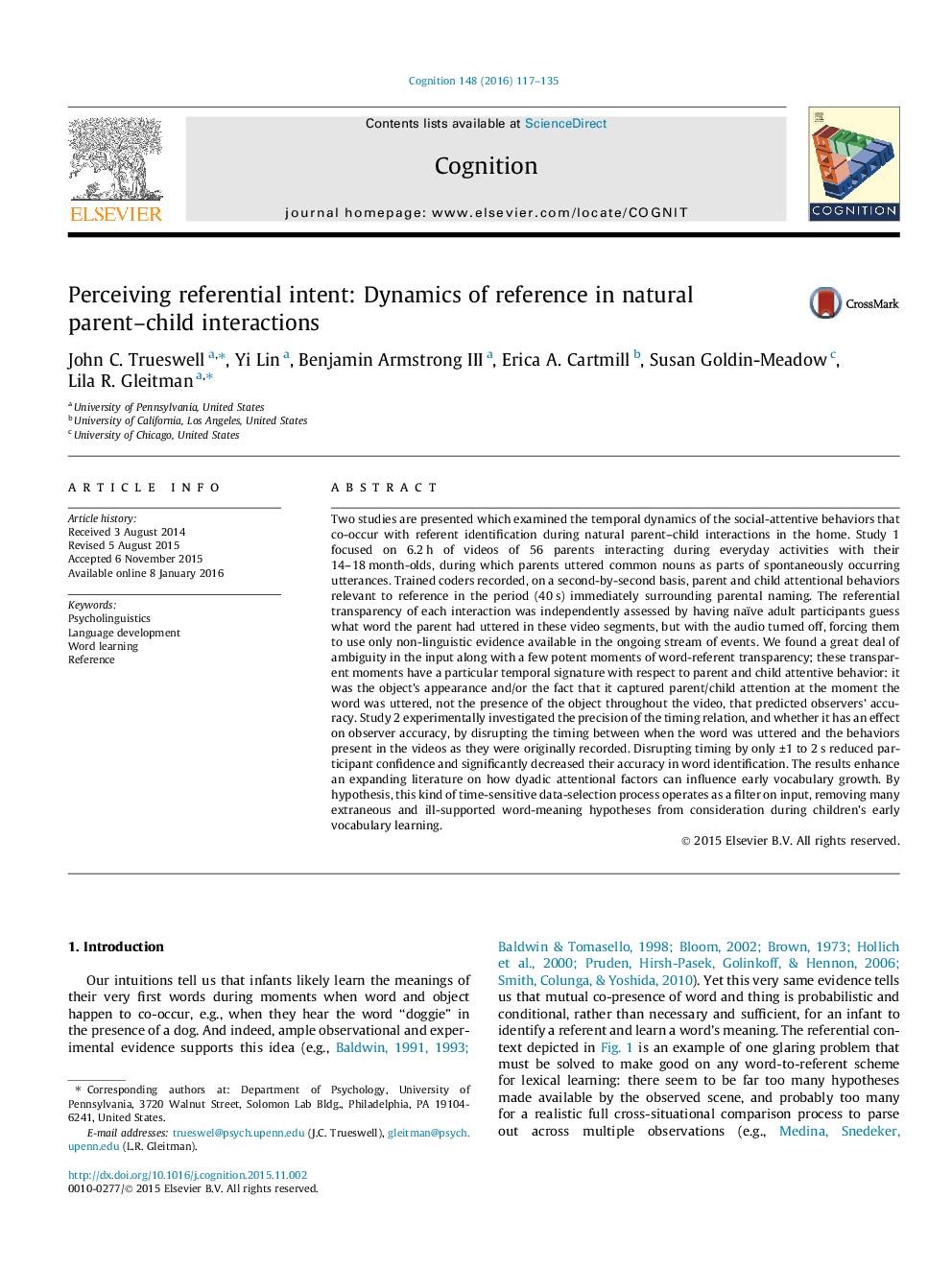| کد مقاله | کد نشریه | سال انتشار | مقاله انگلیسی | نسخه تمام متن |
|---|---|---|---|---|
| 926333 | 1474119 | 2016 | 19 صفحه PDF | دانلود رایگان |
Two studies are presented which examined the temporal dynamics of the social-attentive behaviors that co-occur with referent identification during natural parent–child interactions in the home. Study 1 focused on 6.2 h of videos of 56 parents interacting during everyday activities with their 14–18 month-olds, during which parents uttered common nouns as parts of spontaneously occurring utterances. Trained coders recorded, on a second-by-second basis, parent and child attentional behaviors relevant to reference in the period (40 s) immediately surrounding parental naming. The referential transparency of each interaction was independently assessed by having naïve adult participants guess what word the parent had uttered in these video segments, but with the audio turned off, forcing them to use only non-linguistic evidence available in the ongoing stream of events. We found a great deal of ambiguity in the input along with a few potent moments of word-referent transparency; these transparent moments have a particular temporal signature with respect to parent and child attentive behavior: it was the object’s appearance and/or the fact that it captured parent/child attention at the moment the word was uttered, not the presence of the object throughout the video, that predicted observers’ accuracy. Study 2 experimentally investigated the precision of the timing relation, and whether it has an effect on observer accuracy, by disrupting the timing between when the word was uttered and the behaviors present in the videos as they were originally recorded. Disrupting timing by only ±1 to 2 s reduced participant confidence and significantly decreased their accuracy in word identification. The results enhance an expanding literature on how dyadic attentional factors can influence early vocabulary growth. By hypothesis, this kind of time-sensitive data-selection process operates as a filter on input, removing many extraneous and ill-supported word-meaning hypotheses from consideration during children’s early vocabulary learning.
Journal: Cognition - Volume 148, March 2016, Pages 117–135
